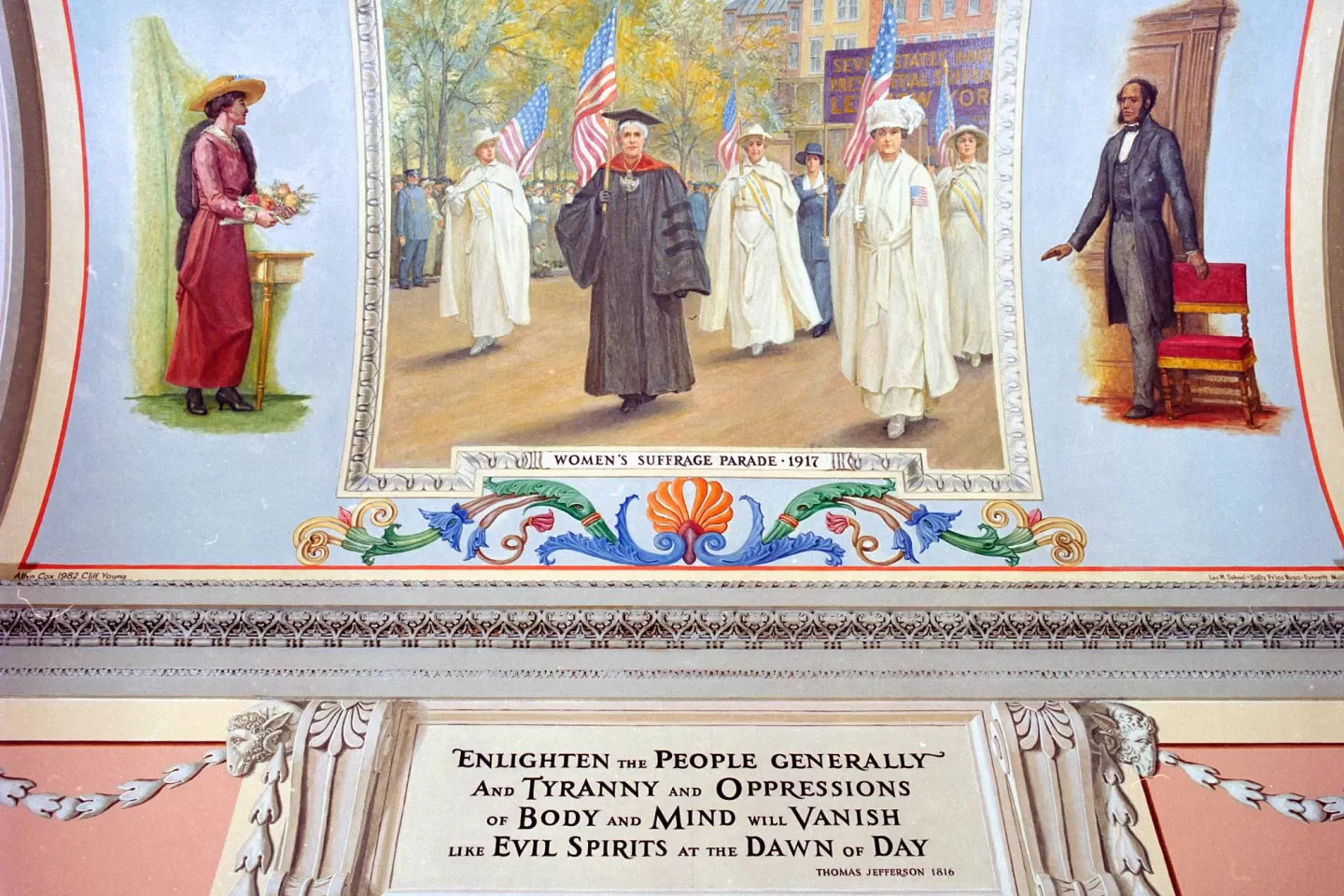For decades after America won its independence from Great Britain, many of its people still lacked basic rights. The drive for woman suffrage was formalized at the 1848 women's rights convention in Seneca Falls, New York, but not until 1920 (with the ratification of the nineteenth amendment to the Constitution) did women have the right to vote. This mural depicts a 1917 suffrage parade in New York. Anna Howard Shaw, in cap and gown, leads the parade in New York, and at the right is Carrie Chapman Catt, president of the National American Woman Suffrage Association.
Left: Jeanette Rankin of Montana, the first woman elected to the House of Representatives, is depicted.
Right: Joseph H. Rainey of South Carolina, the first African American elected to the House of Representatives, is shown.
About the Cox Corridors Murals
The first floor of the U.S. Capitol's House wing is elaborately decorated with wall and ceiling murals by artist Allyn Cox. The central east-west corridor is referred to as the Great Experiment Hall because it chronicles in 16 murals the legislative milestones of three centuries, from the signing of the Mayflower Compact in 1629 to the enactment of women's suffrage in 1920.
